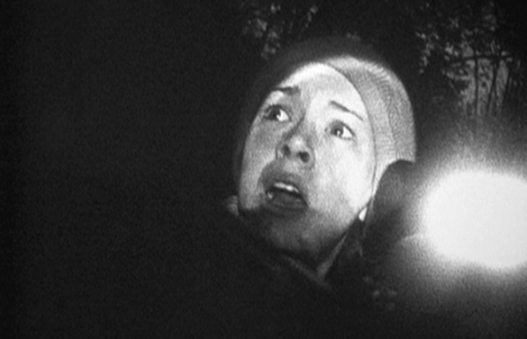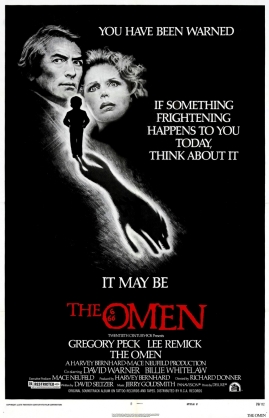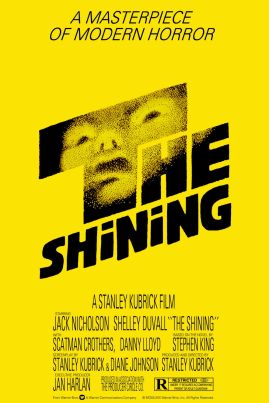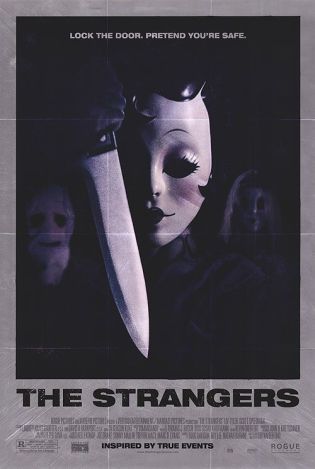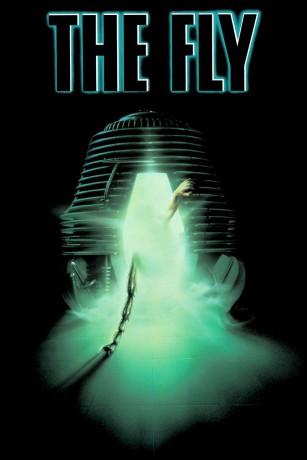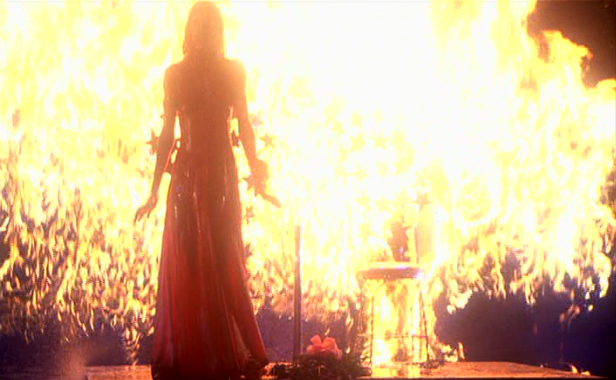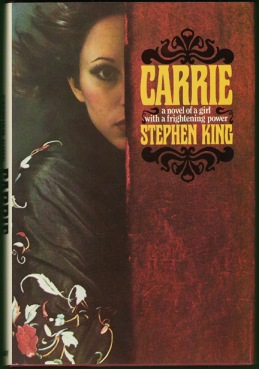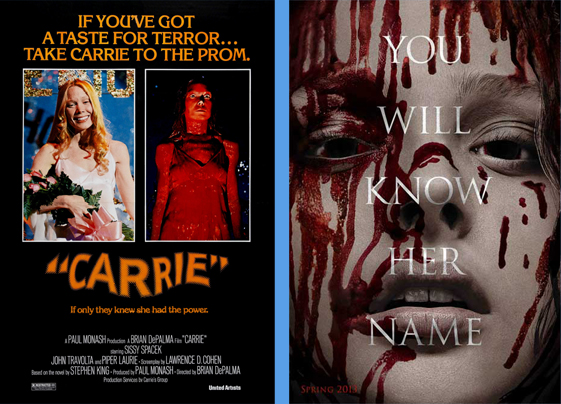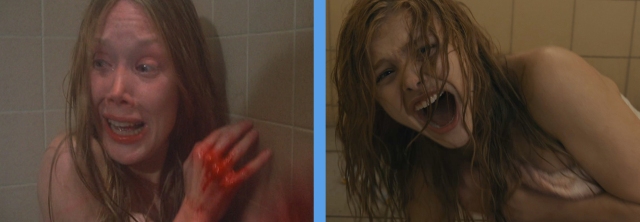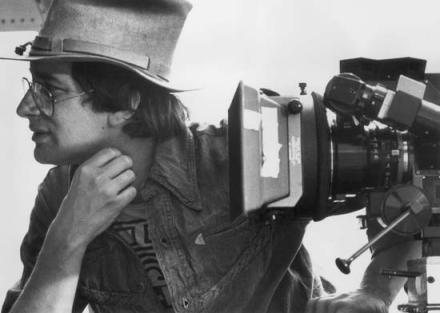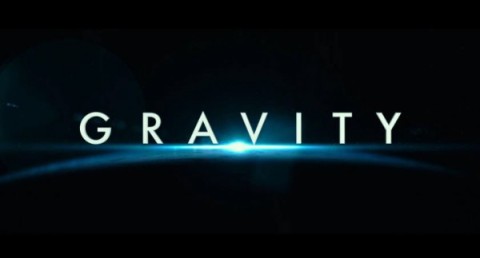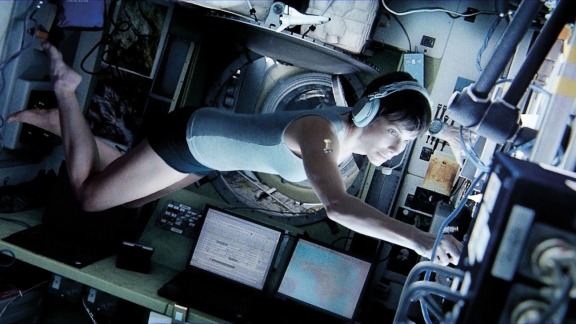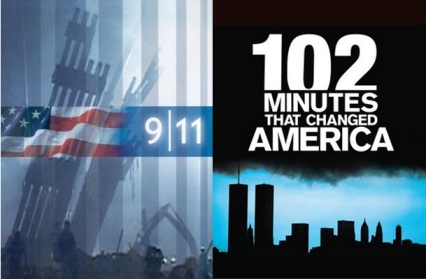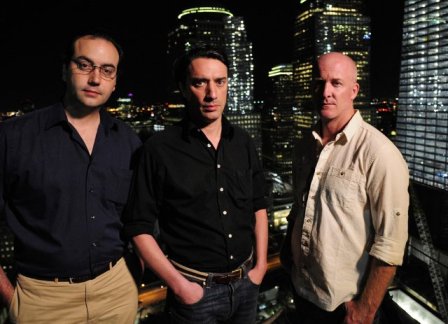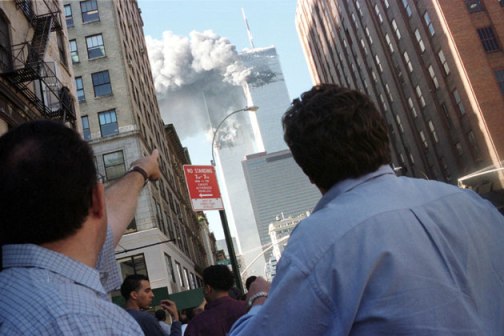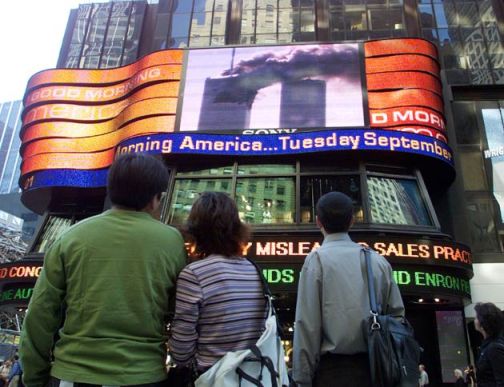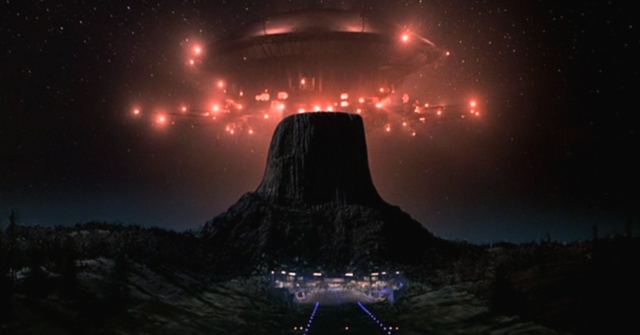
“I thought it was really interesting we didn’t have to journey to the stars to make our discoveries, but, in fact, beings from other stars had journeyed to our planet.” – Steven Spielberg
(Caution: Major spoilers ahead)
Today marks the 36th anniversary of the release of Steven Spielberg’s Close Encounters of the Third Kind, his third feature-film and first after Jaws (1975).
1977 was a memorable year for science-fiction cinema, with Star Wars releasing in May and Close Encounters in November. While George Lucas’ space-fantasy took us to a galaxy far far away, Spielberg stayed home, playing on the phenomenon of UFOs and visitors from other worlds.

Richard Dreyfuss as Roy Neary
Close Encounters tells the story of Indiana electrical lineman Roy Neary (Richard Dreyfuss), who witnesses a UFO fly over his truck while on a job; something he “can’t explain.” Neary soon becomes obsessed with visions of an abstract shape that “means something,” and partnering with Jillian Guiler (Melinda Dillon), whose 3-year-old son Barry (Cary Guffey) is abducted by the mysterious visitors, Neary follows his visions to Devil’s Tower in Wyoming, hoping to find answers.

Theatrical release poster
This isn’t your War of the Worlds extraterrestrial film. Rather than invasion and destruction, Close Encounters touches on family, friendship, engaging curiosity and taking chances. Dreyfuss’ portrayal of Neary’s detachment and dissatisfaction with his family life is emotional to say the least. It’s this dissatisfaction that leads him to leave his family behind and pursue his curiosity surrounding the extraterrestrials.
The film’s title comes from Dr. Josef Allen Hynek’s close encounter classification system:
First kind – sighting
Second kind – physical evidence
Third kind – physical contact
“A close encounter of the third kind is really when you meet them,” Spielberg says in The Making of Close Encounters of the Third Kind.
Spielberg was a firm believer in the UFO phenomenon growing up; the seed for what became Close Encounters and Spielberg’s interest in telling stories of worlds beyond our own.
Paired with special effects rivaling Star Wars, John Williams, who scored both films, provides audiences with an awe-inspiring atmosphere. The notorious five-note melody stays in the viewer’s mind not only as a musical theme to the film, but a universal phrase for friendship.
Thirty-six years later, Close Encounters continues to capture viewers’ imaginations, and like E.T., the film reminds us that in a world full of hate, it’s still possible for friendship to prevail between the most unlikely individuals.

Barry (Cary Guffey) staring into the lights of a visitor craft
As long as I can remember, science-fiction has been my favorite genre of film. I can only attribute this to the flawless ability of such stories to captivate and inspire. So, to further honor Spielberg’s 1977 classic, and celebrate science-fiction, I conclude this post by sharing my 10 favorite science-fiction films.

10. The Matrix (1999)
I remember my mom getting this on VHS through a mail-order rewards deal. I didn’t watch it for several years because she always said it looked dumb. A friend of mine in middle school persuaded me to watch it, after which I was blown away. I thought it was one of the most awesome movies I had ever seen, but I still didn’t quite understand it until some time later.
As an adult, I find The Matrix to be one of the more unique sci-fi films out there because of its use of machines and computer programming. Agent Smith’s comparing human beings to a virus rather than mammals because of our behavior is a particular concept that’s stuck with me in recent years.
The idea of your entire world and life being a computer simulation is scary and hard to comprehend. The question of whether your world is real (a subject that will come up again on this list) is one a person can get lost in, and this film is built around that question.
Awesome fight sequences and special effects, along with many memorable moments like “the Red Pill or the Blue Pill” and the infamous Keanu Reeves bullet dodge, make The Matrix a worthy addition to one’s sci-fi collection. Not to mention the film has one of my favorite endings in cinema: “Where we go from there…is a choice I leave to you,” followed by Rage Against the Machine…Epic.
And this ending is precisely why The Matrix is perfect as a stand-alone film.

9. Predator (1987)
Only when exposed to another being or civilization far more advanced than our own do we realize how inferior we are in the grand scheme. This is why Predator appears on this list.
It seems we humans never think of anything being out of our league in the universe. The Predator, one of the most amazing characters created in science-fiction, is a reminder of our true place.
I’m not saying that the intention of Predator was to point all this out. After all Arnold DID win (human superiority). It’s just nice when some movies show that we’re not as superior as we think. Something to remember.
A wake-up call combined with a fantastic piece of science-fiction/action-entertainment is why I love Predator. That and the fact that the Predator having a 7/8 meter heartbeat is just beyond awesome.

8. Blade Runner: The Final Cut (OR 1982, FC 2007)
This is the film my uncle deems the greatest science-fiction film of all time, along with the majority of sci-fi moviegoers. While it’s not my favorite, Blade Runner is certainly one of the, if not THE most influential films in science-fiction cinema, and I can objectively recognize its status in the genre.
If it weren’t for my uncle, I wouldn’t have seen this film for the first time three years ago. I can amusingly say I watched this against my will because he was going to make sure my brother and I experienced Blade Runner before leaving his house. I’ll admit we weren’t sure what to make of it after our first viewing. However, after multiple viewings, including that of the theatrical and international cuts, I’ve grown attached to Ridley Scott’s android thriller.
Him having made both Alien and Blade Runner, I like to say Ridley Scott is the man responsible for science-fiction thrillers in cinema. I find Blade Runner to be the stronger film though, as it has a cinematic approach similar to Alien, but with a more personal touch. And come on, it’s Harrison Ford, man.
No doubt about it, Blade Runner is a hell of a film. The only question is: Is Deckard a replicant?

7. Independence Day (1996)
Next to Jaws, this is the film you watch every Fourth of July in the United States. People can say whatever they want about this film’s plot, specifically regarding the ending, and they can suck it too. ID4 is the standard I hold for every alien invasion film made since 1996.
You have city-sized ships, ultimate destruction, dogfights, Jeff Goldblum being a nerd’s nerd, Will Smith beating the crap out of an alien captive, Area-51 and an eerie autopsy…what’s not to like?
I didn’t hear people complaining about the film’s ending until I got to college, and I must admit I was struck dumb by such talk.
At 6 years old, this was my first alien film. I loved and was obsessed with the movie, even getting one of the alien figures for Christmas that year. Of course, there were still moments that scared me, notably the clip below. I saw this in the theater at least twice, and after the first viewing, I remember not wanting to look when the alien awakes during the autopsy.
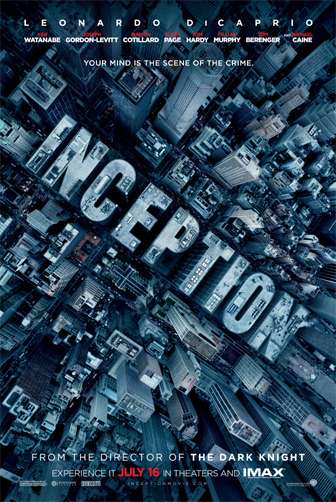
6. Inception (2010)
Are we awake or are we dreaming? Is our world real?
These are three of many questions presented by Christoper Nolan’s mind-navigating sci-fi thriller. The thought of people being able to invade your mind via dreams and steal your secrets is certainly one of the film’s scarier notions, but apparently such actions are simple as opposed to planting an idea in one’s mind.
When this film came out I only heard about how confusing it was, and that one had to see it several times to understand the ending. I finally saw it at my sister’s apartment the following Christmas and the first thing I thought was, “What the hell are people talking about?” I had no trouble following Inception, and thought the contrast between dream levels was pretty straightforward. Then the ending came with the spinning top and abrupt cut to black, and I thought, “Oh.”
Everyone has their own interpretation, mine being that Cobb was awake and finally reunited with his children. For one, what kind of shitty ending would that be if he didn’t? The film’s only been leading up to that moment for 2 ½ hours. Plus, come on…the top is clearly about to fall.
What people probably fail to take away from Inception is it doesn’t matter whether Cobb was awake. The point is he finally decided to let go, which is a more powerful message than the status of reality.
This film has, without a doubt, the greatest special/visual effects used in modern cinema. As a filmgoer, I respect and admire Nolan’s reliance on practical effects. In a cinematic world where CGI is everywhere, practical effects only become more important in terms of enhancing realism. If I had a top-10 list of special/visual effects shots, the scene in which Joseph Gordon-Levitt fights a projection in the gravity-shifting hallway would definitely be among the top 5 slots.

5. Back to the Future (1985)
Best time travel movie ever.
Whenever someone hears the words “time machine,” how much do you want to bet they picture a DeLorean?
When I saw this film at the age of 4, I remember my mom got me to watch it by telling me “the guy from Teen Wolf” was in it. This simply became another one of those movies that stuck with me. Aside from the humor and awesome concept of time travel, the biggest impact Back to the Future had on me was introducing me to rock and roll.
The attention to detail and cultural differences between 1985 and 1955 portrayed in the film are another factor that make Back to the Future stand out among time travel movies. Some of the best include Doc’s laughing at the idea of Ronald Reagan being president, and Lorraine’s father’s reaction to Marty saying “John F. Kennedy Drive.” – “Who the hell is John F. Kennedy?”
And I, for one, am fond of the sequels, but still recognize the original as the staple of the time travel genre. Who can forget that moment when Einstein becomes the world’s first time traveller?

4. The Iron Giant (1999)
This film is an example of how animation can emotionally trump live-action. The bond between a little boy and an extraterrestrial machine The Iron Giant presents is so convincing, you almost forget your watching a cartoon.
Many will say this is the best non-Disney animated film out there, and while I agree, I would even put it up in the top 10 animated films of all time.
One of the things I love most about this movie is the depiction of 1950s American culture, like the fear of Communism and atomic holocaust with the duck-and-cover video shown in Hogarth’s school. The whole film just has that 1950s sci-fi B-movie feel to it, even with it being animated.
Of course, my favorite part is the Giant’s reaction to what appears to be Hogarth’s death. The anger and sadness mixed with regaining his memory result in a hostile response toward U.S. military forces. One of his weapons, which I can only describe as a “disapparator,” (stemming from Harry Potter lingo) is one of the most badass things I have ever seen in science-fiction.

3. Terminator 2: Judgment Day (1991)
I first saw T2 in the summer of 2000 while on vacation in Destin, Florida. The thing that stuck in my mind after watching it wasn’t the T-1000, which some might expect, but Sarah’s dream of Los Angeles being nuked. That scene scared the hell out of me as a child, and to date, remains one of the scariest scenes I have ever seen in a movie.
This film introduced me to what a nuclear weapon was and what it could do (I didn’t see The Iron Giant until later, and in that film, nukes aren’t depicted in the same manner as T2 ). After seeing that sequence as a 10-year-old, and learning that nukes were very real, it terrified me that something like that could actually happen, however unlikely.
T2 was one of those instances where I saw the sequel before the original, which made for a more interesting experience because I didn’t know who John Connor’s father was, and I couldn’t understand why Sarah was so afraid and distrusting of Arnold, despite the fact he was the hero.
There are many memorable moments from T2, like Arnold using a shotgun while riding a motorcycle and the protagonists blowing up Cyberdyne Systems. But of course, the most awesome part of this film is unmistakably the T-1000.
Next to Vader, the T-1000 is the best movie villain, hands down. From a technical standpoint, seeing Robert Patrick morph into other people and form weapons with his hands was an awe-striking sight for moviegoers, showing just where CGI was taking the film industry. From a story standpoint, how in the hell do you defeat a liquid-metal killer? There’s a surefire solution, of course, for those who have seen the film, and if you haven’t, I don’t know where the hell you’ve been for the past 22 years.
The T-1000 has many kick-ass moments, but my favorite, which, sadly, isn’t featured in the clip below due to availability, is the first brawl between it and Arnold in the steel mill.
Arnold throws the T-1000 against a metal surface, face-first, but this proves useless because the T-1000 morphs its body from front to back, standing face-to-face with Arnold once again. Arnold then decides to punch the T-1000 in the face; another failure. The T-1000 begins to morph once more with Arnold’s fist trapped in the shifting alloy. It morphs its head into its hands, giving the T-1000 a firm hold on Arnold. So…Arnold is basically screwed.
T-1000 = Sheer badassery

2. Jurassic Park (1993)
I know what some may be thinking. “Jurassic Park is action-adventure.” Yes, but at its core, Jurassic Park is a science-fiction story. Scientists resurrecting extinct animals via genetic-engineering is the basis for Michael Crichton’s novel, which transfers over into Spielberg’s film adaptation, making Jurassic Park an unquestionable addition to the science-fiction genre.
Like with Back to the Future, I saw this movie when I was 4. I was blown away then, and am still blown away today. Some kids were probably scared of this movie when they saw it. My sister said the Dilophosaurus scene scares her to this day, and she’s in her late 20s. From what I remember, this film didn’t scare me at all. I think I was so mesmerized by Jurassic Park that it was impossible for me to be scared.
Sadly, I didn’t get to see this in theaters in 1993, so VHS was my first experience, which only made this spring’s 20th anniversary 3D re-release all the more important to me.
I saw the re-relesae twice, once in IMAX, and I was amazed at how well Jurassic Park has held up on the big screen. Industrial Light & Magic’s effects are simply top-notch. They executed the blending of animatronics and CGI to the best of their ability for the purpose of showing moviegoers living animals, and succeeded.
Like Jaws and the Star Wars trilogy, there isn’t one damn thing I find wrong with this movie. Everything from the acting to the effects and music is perfect. Funny coincidence that all five scores just happen to be composed by John Williams. And for anyone who questions the sudden appearance of the sheer drop in the Tyrannosaurus escape, please check out this image.
Jurassic Park, of course, set the standard for use of digital effects in the film industry. This changed movie making in the way Star Wars did in 1977. It took the potential for enhancing the illusion of film a step forward, and where many films have attempted to either replicate or top Jurassic Park, many always fall short.
In an interview with Phil Tippet and Dennis Muren, two of the special effects artists who worked on Jurassic Park, the two were asked if special effects have gotten better, or to the point where they’re completely unrealistic. After a brief silence, Muren says special effects have gotten “bigger.” Tippet then adds, “Not better. It’s kind of like symphonies at the end of the 19th century. All they could do was get louder and longer. And where’s the symphony now?”
Food for thought.
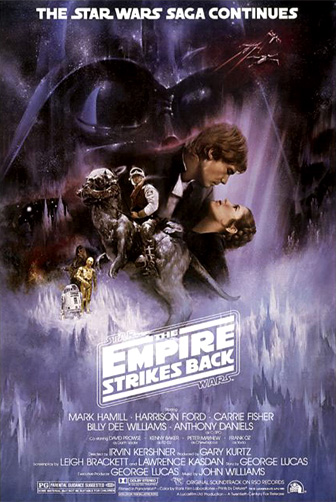
1. The Empire Strikes Back (1980)
Referred by some as Star Wars Episode V, the sequel to George Lucas’ 1977 classic probably had moviegoers thinking, “Oh, there’s no way this can top the first one.” Oh how wrong they were.
Empire is arguably the best film in the Star Wars franchise because of the overall intensity and drama, Vader’s relentlessness, the introduction of Boba Fett and Yoda, the Battle of Hoth, the romance between Han and Leia, and the twist at the film’s climax. Like the original Star Wars, Empire includes many humorous elements, but at the same time, takes the maturity level a step above its predecessor.
As always, John Williams provides the audience with an emotionally-engaging soundtrack. For some who may not know, Empire is the first Star Wars film to use “The Imperial March,” the notorious music commonly known as the Darth Vader theme; just one more element that heightens Empire’s quality.
While it is true that the Star Wars franchise is more space-fantasy than science fiction, the galactic setting makes it impossible for me not to include Empire on this list. When you’re in the mood for a science-fiction/space film, Empire has everything you want. And why Empire and not the original Star Wars? Empire is simply my favorite Star Wars film.
I think we have a lot to expect from the new films Disney and Lucasfilm plan to release, but no matter their attempts, I don’t see another Star Wars film achieving the quality of The Empire Strikes Back.
